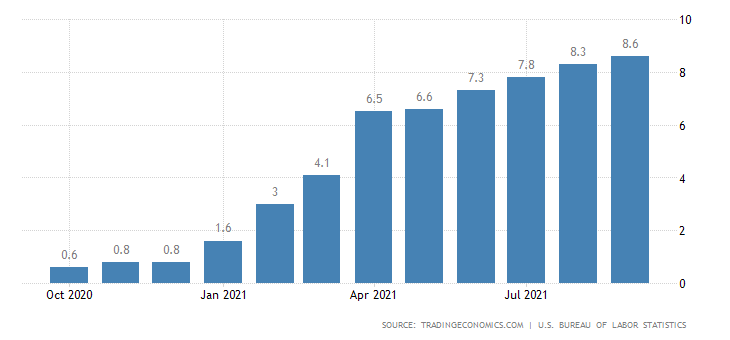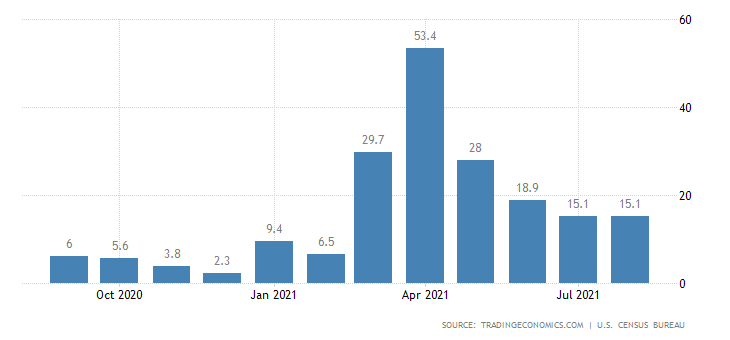The US PPI results have halted a frenzy triggered by the inflation report. Producer prices in the United States increased to 8.6% from 8.3% and above market forecasts of 8.5%. Given that the PPI is considered a leading indicator for inflation, its growth means that inflation is unlikely to slow any time soon. In fact, it may well accelerate.
That is why the Federal Reserve will have no other choice but to announce QE tapering in November. It actually became clear after the release of the inflation report. However, the market anyway tried to keep alive the hope that the regulator would delay the decision until December at least. Anyway, the PPI has put everything in perspective and the weakening of the dollar has ended.
Still, market participants expect USD to be bearish. Moreover, jobless claims data in the US came well above market expectations, thereby confirming the inevitability of monetary policy tightening by the Federal Reserve. Thus, the number of initial jobless claims dropped by 36K, whereas the reading was expected to fall by 14K. Meanwhile, continuing claims plunged by 134K compared with the forecast of a 78K decrease. Given all that, the greenback was supposed to show more impressive growth. Yet, it did not happen. It was just that the dollar was no longer weakening.
United States PPI:

Nevertheless, the greenback is expected to continue falling today due to a slowdown in retail sales growth to 9.0% from 15.1% y/y. If we are still talking about annual growth, the reading may contract by 0.1% m/m. Although modest, it is still a decline. Given the high inflation rate, prices are rising and consumer confidence is decreasing. Such a combination has always been considered extremely unpleasant and negative. So, the dollar is likely to remain under pressure.
United States Retail Sales:

Amid a corrective move from the pivot point of 1.1529, EUR/USD reached the level of 1.1624 where the quote bounced slightly and came at a standstill. Given the current price changes, the price was heading towards the swing high as of Oct. 4 and bounced in this area.
The RSI bounced from the oversold zone on the D1 chart, approaching 43. On the H4 chart, the indicator confirms a correction, moving in the 50-70 zone.
Despite bullish EUR, the bearish trend that started in the market in early June is expected to continue.
In this light, we have 2 possible scenarios:
Given the oversold status of the euro, a correction is not enough for a trend reversal. If the quote consolidates above the swing high of 1.1624 as of Oct. 4, the price is likely to head towards the resistance level of 1.1700.
Alternatively, the downward trend might extend. If the pair returns below 1.1580, the volume of short positions should increase. The quote may go to the swing low as of Oct.12 and the downward trend to continue.
In terms of complex indicator analysis, technical indicators are signaling to buy the pair in the short term and intraday given that the price is at the peak of the corrective move. Technical indicators are giving a sell signal for medium-term trading amid the possibility of a downward trend.
InstaForex Group
